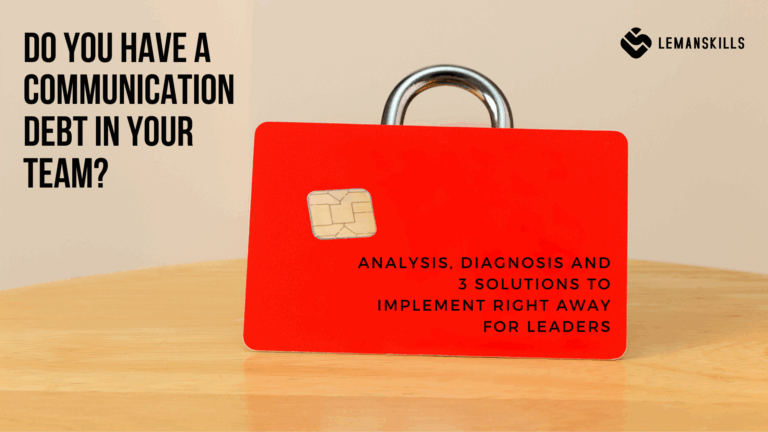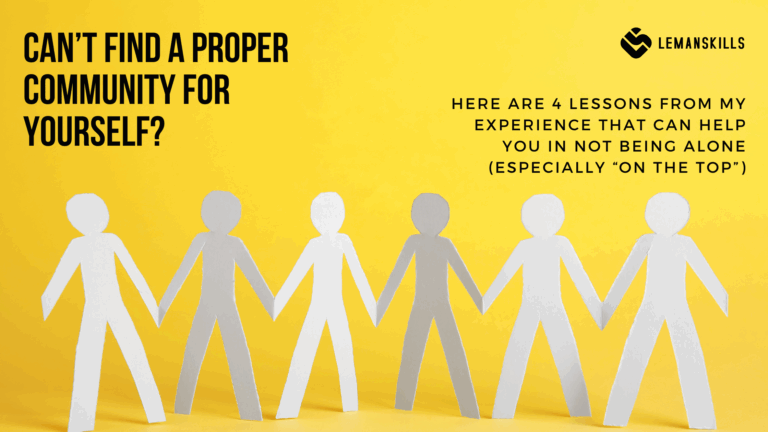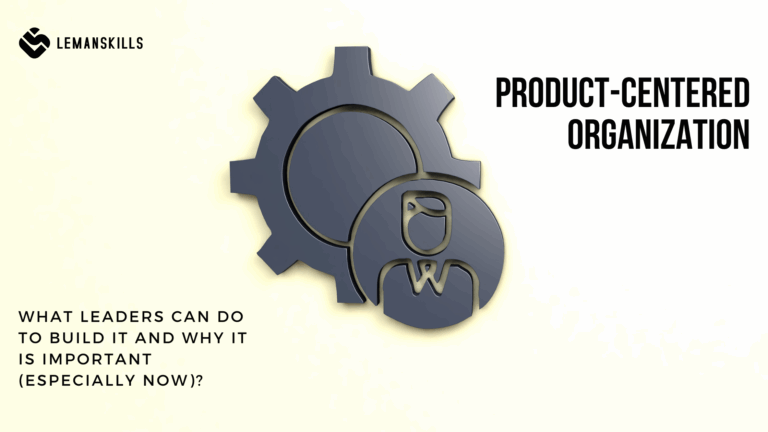When we are managers, or we want to become ones in the nearest future, we often realize in a certain moment that there are so many things we need to cover in this role. Being Hiring Manager and recruit new people to the team. Onboard new hires. Organize and conduct team meetings (weekly, bi-weekly, monthly), 1:1 meetings with every person in a team (weekly, monthly, quarterly), summary meetings (monthly, quarterly). Taking care of the team development (on individual and on team level), answering their questions that never end (especially during the time of change). Solving problems, conflicts and other issues that appear on a daily basis. And at the same time, we need to deliver business, by covering endless tasks, participating in other meetings, learning all the time how to be a good manager.
And we need to do all of those things in an environment that changes all the time. The history of the world shows us that there are periods of time where things were more constant, but most of the time we are a part of some kind of transformation, transition, a constant change. And for a manager, this lack of stability and uncertainty is one of the hardest elements of the work environment that influences our plans, actions and decisions that we make every day.

Because how to build a strong, high-performing team, full of engaged people that will deliver results no matter what happens? How to do it when we already know that the change we face will never stop? That we need to operate in the circumstances that are mostly unpredictable? Let’s dig deeper into this subject today.
Why the change never ends?
Interesting thing about the change is that we are so afraid of it, most of the time we resist it, because we think that we are going to loose something when the change will come. Or we are angry that somebody will change something and we are will need to adjust, AGAIN, and it makes us feel like that. But at the end of the day, when we get used to the new reality, we are quite happy about it – sometimes even that much that we don’t want to come back to the previous scenario.
Example? Remote work. When the pandemic came, a lot of people needed to change the way they were working from being at the office, to being at home (of course if the type of the work allowed it). It was dramatic in many cases: living in 2-room apartment, with 2 kids, working partner and a dog. Or living and being alone all the time what brought more depression that anytime before. Weak internet access, lack of technological equipment or abilities to work or learn remotely. Many people were whining that they can’t focus or they never finish working, because their computer is always turned on.
And now? Mostly it is a wave of huge rage when organizations have started to decide that employees should come back to the office, mostly in a hybrid mode. And in many cases it is a no-go, people refuse openly and start looking for another job that will allow them to work remotely 100%. Crazy, huh?
The change never ends because the world develops itself all the time: it is the nature of it. There is a saying that if you don’t grow, you go backwards. That’s true when we think about the individuals, teams, organizations and the whole world. And it happens because we want to be better, smarter, we learn and we automate things. We want to do things smarter, using less time and more technology if possible to achieve better results. To not learn one thing or a skill for 20 years, but to spend couple of hours and learn from people that have already done the life work in a certain area. Changes making us feel in a certain way, no matter if they are positive or negative. In most cases we can’t control it, but what we can do is to make proper decisions to use those changes the best possible way.
What is the most important for people?
In the world of a constant change, managers need to have a proper strategy and tactics to work with it no matter what kind of circumstances comes. It is too frustrating and too exhausting to make a decision how to operate in the situation of change differently every single time. That’s why it’s helpful to have a framework that you can use every time and you adapt it however the situation requires you to act.
What is the most important for people in any situation of a change that the organization can face?
- Structure. When the change comes, one of the first emotions that appears is fear. Fear that the change will hurt us somehow, that we are going to loose something we care about. And what helps people with dealing better with this emotion is structure: of the day, of tasks, of meetings. Even if it is the slightest repetitive thing that people can be attached to, it makes them feel more secure, even when they experience a massive change. Give your people the structure of their day, week or month, take care of constant elements that appear regularly. Even if everything outside of their bubble is burning, they have something they can rely on.
- Influence. When you have zero influence on something, you can freeze really easily and no communication, no information and no stimuli will reach your brain out. Of course, there are a lot of different situations when we don’t have influence on something, starting from a certain person’s behavior, through organizational changes to the global issues or transitions. So when you are a manager, use the opportunity to create an environment where your team understands where they have zero influence (so talking or analyzing a certain situation or decision is just a waste of time) and where they actually have influence (and they can focus their energy there). It is going to be more efficient, less frustrating and will give them more calmness in the whole system.
- Truth. Give people the truth. There are not many things worse that sticking to the bs that you’ve created in your head because you thought that you’ll protect people or something. Of course you need to think about the way that you communicate before you actually do it. It’s not about being brutally honest, no matter what. It’s more about being transparent, honest about what’s really going on, being radically candid. When you lie, people will find out sooner or later and you lose credibility and trust. For what? For a moment of peace and silence before the storm or a brief feeling of “protecting” people? Believe me, it’s not worth it. Your employees will trust you more and they will be calmer when they will have a well-communicated truth, a safe space and time to process it and a support when they need it. That kind of combination gives a bigger chance to succeed, even if it doesn’t look like that in a certain moment.
How to come back to OK-OK position to lead the change successfully?
Sometimes you as a manager don’t fully agree with the changes or decisions that are being made in the organization. And that’s ok – it’s not physically possible to agree with everything. All of us have unique set of values, things that are important for us or those that we don’t accept.
But the leadership function has its own rules that we need to follow: we accepted it once we agreed to have this position. Some of us are not aware of it from the very beginning, but it’s crucial to understand it to be a successful manager. As a manager you are a part of the organization and you are responsible for its success or failure. On a business level, but mostly on a people level. It means that you are the voice of the company that your people hear in the clearest way. And the way you communicate is often the first thing they hear, so they learn from it the most.
When you don’t agree or have a very strong personal opinion about a change that is happening in the organization, it is a high risk that you won’t be in OK-OK position that will allow you to think and communicate clearly. Most of the time the position is OK-not OK (meaning: bad, nasty organization and poor us, employees). Again: it’s a natural reaction to a change, in a root of a fear of losing something. The key thing is to get back to the OK-OK quadrant. To say to yourself: “ok, I don’t need to agree with everything, but I understand why we do this change and what we want to achieve here”. “I am a part of the organization and my role is to pass the information to my people as well as I can, to support them in going through that change as smoothly as possible, without a drop in their productivity and engagement”.
This is the best possible reaction you can have in every change that you experience. You lack of information or you are not sure about the WHY? Go get the information. Don’t blame the organization that THEY didn’t provide you some facts. We are all human, sometimes the communication process is not perfect. But it’s your role to get the information, don’t look for BAD, GUILTY PEOPLE that DID IT TO US. Be wise, think clearly, use the opportunity to learn and be better as a manager every time that the change comes.
The bottom line
Being a manager is a hard work. It’s not just the fancy position title, status, more money or a nice car. It is a real work, effort that you need to put in every day to be a good person for your people. To support them when needed, but also to give them data and structure, so they know what is happening. A good manager chooses wisely how to manage a certain situation, how and what kind of information pass to people, so they understand the reality, and don’t waste their time on gossip, frustration or other negative emotions.
Do you want to be a leader in a change that people follow and trust? Or you rather want to be a person that is “on the peoples’ side”, whine with everybody and resist to everything that is going on? The second option is not a leadership, it’s not doing your job: it’s being a coward.
The choice is yours.




